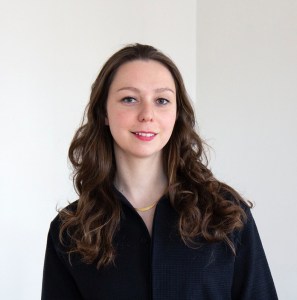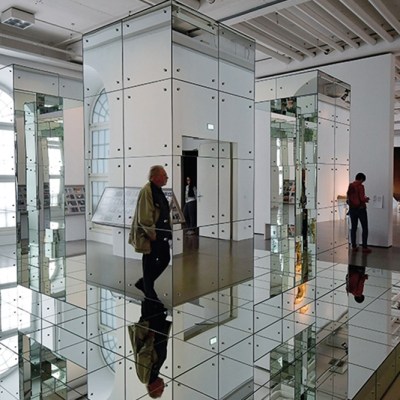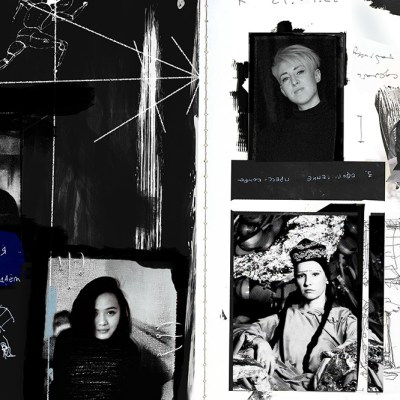The huge Documenta exhibition that takes place once every five years in Kassel, Germany, is regarded by many as a bellwether of contemporary art trends, heralding the artists, artworks and ideas that will soon be showing in museums, biennials and commercial art fairs around the world. But this edition, the 15th since it was founded in 1955, is proving exceptionally controversial, in part because it is dominated by art, performances and roundtables made by mostly non-Western artist collectives. The Swiss-German newspaper Neue Zürcher Zeitung declared it ‘an art exhibition without artists’, while some critics are asking if what is on show is art at all.
However, it is controversy of a different nature that has dominated German headlines since, shortly after the show began, an enormous protest banner by Indonesian collective Taring Padi was found to have contained two antisemitic caricatures. The banner, entitled ‘People’s Justice’, was made in 2002 in response to the fall of the military dictatorship of President Suharto in 1998. It was hastily removed.
Ahead of a full report to be published in the September 2022 issue of Apollo, Jane Morris asks six leading museum directors, curators and gallerists what they think of this year’s edition.
Frances Morris. Photo: © Hugo Glendinning

Frances Morris
I was probably the most establishment figure on the committee [to select the curators for this year’s Documenta], in that I represent a major, international, Western museum [Tate Modern]. Even though I was on the search committee, I arrived in Kassel thinking I was going to see a lot of vernacular food stations. So I was quite taken aback by the quality of the artistic production including conventional works of art. ruangrupa have brought forward a whole generation of artists and types of practice that I was unaware of.
For me, this was a case study in how we might do things differently. We already know that you can’t build new audiences in museums just by asking them to look at art. You have to involve them in activities and experiences. If we are really serious, we must begin to shift some resources away from from regular forms of activity – for example, major loan exhibitions – to invest in more obviously compelling experiences for less privileged audiences. So what’s exciting about this edition of Documenta is that it feels like a direction of travel for institutions like us that are meant to have [a social] purpose.
Frances Morris is the director of Tate Modern and one of eight international curators who selected the Indonesian artist collective ruangrupa to organise Documenta 15.
Katerina Gregos
Judging this Documenta by the same criteria we use for other international exhibitions is missing the point. I was moved by the show because it gives some idea of what it is like to make art in precarious political, economic and social circumstances. It is generous, inclusive, visitor-friendly, unpretentious and unburdened by the pseudo-intellectualism and the toxic individualism that pervade the art world. True, some of it looks amateurish but its heart is in the right place. The more troublesome question is what it says about contemporary visual art. Is art too elitist? Too unable to engage wider communities? Is contemporary art becoming redundant? This Documenta seems to imply, ‘yes’.
This edition is important, but I am not so sure how long its effects will last. Given the art market was practically banished, this edition won’t have many fans in an influential part of the art world. Meanwhile the gap between critical, experimental, documentary, social, political or research-based practices and the art market is widening into an almost unbridgeable chasm. Museums and institutions can certainly learn from Documenta’s openness, hospitality, and community-building but they need to remember that they are also guardians of artworks and cultural heritage in addition to highlighting pivotal new ideas.
Katerina Gregos is the artistic director of the National Museum of Contemporary Art, Athens (EMST). She curated Manifesta 9 in 2012 and the first Riga Biennial of Contemporary Art in 2018.
Alex Mor. Photo: Federico Bottia

Alex Mor
We’re used to the idea that the Venice Biennale, Documenta and other major biennials are barometers of the art market because they have a big impact on artists’ careers. But this edition of Documenta erases the whole validation structure and creates something totally different. Normally we’d walk around the exhibition, have meetings with curators and collectors and show them some of our artists’ work. This time I went to cooking lessons, dance performances, poetry readings and met people from cities and countries that I’d barely heard of before. I didn’t talk about a single price in four days, which never normally happens.This Documenta tapped into something I have been seeing in the work in some of our other artists, like Lawrence Abu Hamdan, where the work transcends the white cube.
The first three videos in Marwa Arsanios’s project [Who is Afraid of Ideology (2017–ongoing)] followed the work of women in countries such as Syria and Colombia to get rights to water and land. But for this one, using funding from Documenta, she went on a big adventure to buy a quarry in the middle of the Lebanese mountains and turn it into commonly held land. It’s an important step in her work, in that it’s not just documenting something — it’s about taking action. Documenta is the first time I’ve seen such a large number of projects where it is not about the art any more, but about making things that have real consequences in real life for people in different parts of the world.
Alex Mor is a co-founder of Paris gallery mor charpentier, which represents the artist Marwa Arsanios.
Mark Godfrey
People’s Justice [by Taring Padi] was installed on the Friedrichsplatz, where some of Joseph Beuys’s 7000 oaks are, and where Marta Minujín’s The Parthenon of Books was built in 2017. It’s always been a place where a work central to the Documenta curator’s vision is installed. In this year’s Documenta, ruangrupa took a different approach to curating from previous iterations. They are an artist collective who see themselves facilitating lots of different artist collectives. They created an anti-hierarchical structure and they were not going to put themselves above other artist-collectives and do the traditional curatorial job of introducing them, interpreting them, or commenting on the work.
People’s Justice was 20 years old, and prior to installing it, ruangrupa appeared not to have really looked at it very carefully. This was pretty surprising, but that’s what they said themselves. And because of the model of curating they had instituted, when the racist, antisemitic images were noted, they did not appear to want to interpret them. My position is that I would have loved People’s Justice to stay up, accompanied by an interesting text explaining why an Indonesian collective making work about the Suharto regime felt it appropriate to include racist content. But that path wasn’t deemed acceptable by the German institutions overseeing Documenta, and nor were ruangrupa prepared to take that approach.
Activist collectives exist across the world. Sometimes they present themselves publicly. If you go to Glastonbury, for instance, you see collectives who do amazing things in a green political space, with radical ideas about agriculture or cooking or whatever. I really respect those activities, and there will be more of an interest in collectives as a result of this Documenta. But when it comes to displaying complex political art in public spaces, I think that curators should mediate between works of art and audiences. What happened at Documenta shows that it was naive to think that artist-curators could facilitate collectives rather than mediate and interpret their work.
Mark Godfrey is an art historian and one of the curators of the ‘Philip Guston Now’ exhibition touring the United States, which was controversially postponed in the wake of Black Lives Matter protests in 2020 due to the depiction of the Ku Klux Klan in some of Guston’s paintings. He spoke to Apollo about the controversy surrounding the discovery of two images interpreted as anti-semitic in a huge banner made in 2002 by Indonesian collective Taring Padi.
Shwetal Patel. Photo: Swanoop John

Shwetal Patel
Before I got to Documenta, I didn’t know what to expect. When I got there, I realised that my Western-art-history trained brain and even my experiences in Kochi, India, hadn’t quite prepared me for the scale of ruangrupa’s vision. I ended up darting around, quickly realising that this felt like a socially engaged community project as much as an art exhibition. This Documenta raises many questions and will continue to do so long after it has closed: what is the role of care centres in cultural spaces? What can a wall of embassy and arts councils’ logos project? What is an artwork, and where is the artwork? Or is this all a kind of social experiment?
It’s an interesting way of using the city of Kassel: we get to go see different places that people rarely visit. I went to see the Ghetto Biennale display at the St Kunigundis church, and there were all sorts of informal stalls set up with people, presumably from the African diaspora, lounging in the grass and selling wares. I grew up in Zambia, and was struck by how familiar it felt, and how brilliant to invite all these different people to this exhibition which is normally very white and northern European.
When I remember the shows of the 1990s and early 2000s the period felt quite radical, and I think we’ve missed that. This show breaks the Western theoretical idea of the solo artist as genius that emerged in the Renaissance, despite the fact that no single person can paint the Sistine Chapel or build a duomo. This show acknowledges that collectives are important and play a role in most arts communities around the world. If you look at successful artists, they usually have a support system of other artists. It’s very hard to become an artist or to remain an artist without that – unless you really are a solitary genius.
Shwetal Patel is a founding member of the Kochi-Muziris Biennale and an independent researcher based in London and Kochi.
Nina Hendrickx

Nina Hendrickx
Normally everyone goes to Documenta but this year people thought there were going to be loads of workshops and not much art, which is a pity because this is an important edition: the curators, ruangrupa, have basically refused to conform to European institutional agendas.
If you look back previous editions, especially the ones curated by Catherine David or Okwui Enwezor, there were non-Western artists, but this time there are barely any artists from the West. Museums and commercial galleries keep saying that they want to be diverse and show practices from all over the world, but this Documenta is about more than including a few Black artists, it is about doing everything differently. Ruangrupa have introduced us to ideas such as lumbung (the Indonesian word for a communal rice-barn, where the surplus harvest is stored for the benefit of the community) and nongkrong (an Indonesian slang term for ‘hanging out together’). It’s as if they are saying: we aren’t going to use some cliched phrases from the Western art world. You need to use our vocabulary instead.
This Documenta says that good art can be a lot of things: it doesn’t have to be a painting that’s so new it is still wet. It says that art comes from sharing knowledge and ideas, and it suggests that the art and the art market could be more sustainable. But I fear that this is a lesson that the art market and perhaps the institutional world doesn’t want to hear. It may be that the next Documenta is a more conservative and traditional one as a result.
Nina Hendrickx is a director of Zeno X gallery in Antwerp, which represents artists including Marlene Dumas and Luc Tuymans. The gallery had no artists in this year’s Documenta.
Documenta 15 runs until 25 September in Kassel, Germany.



